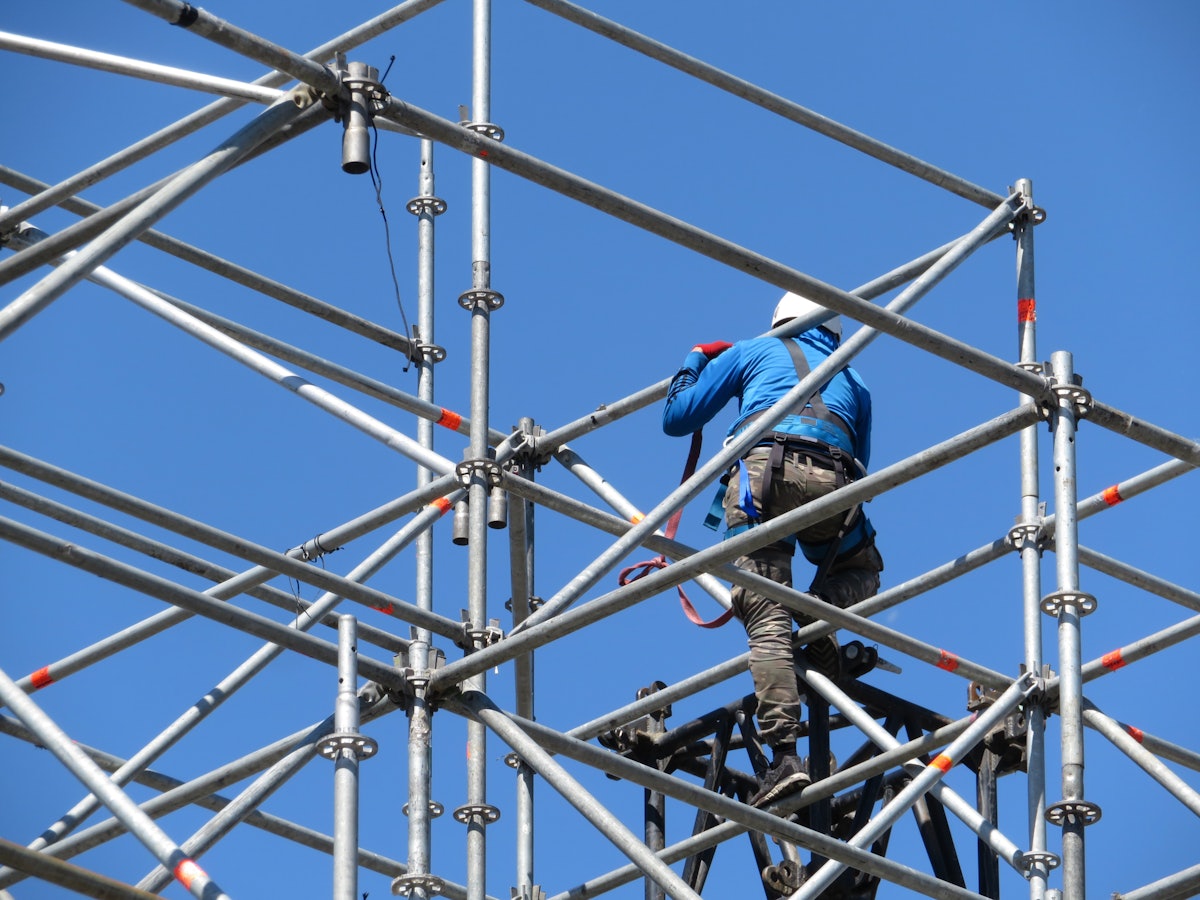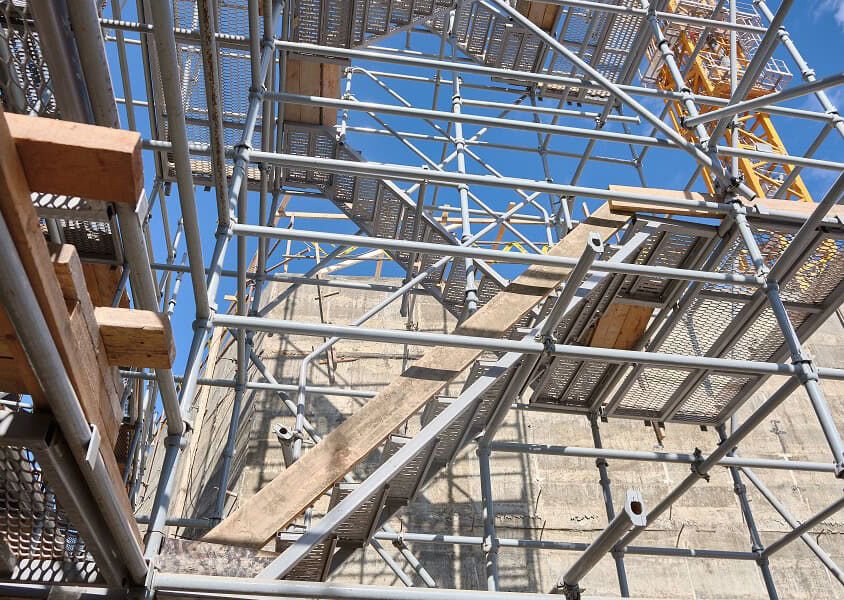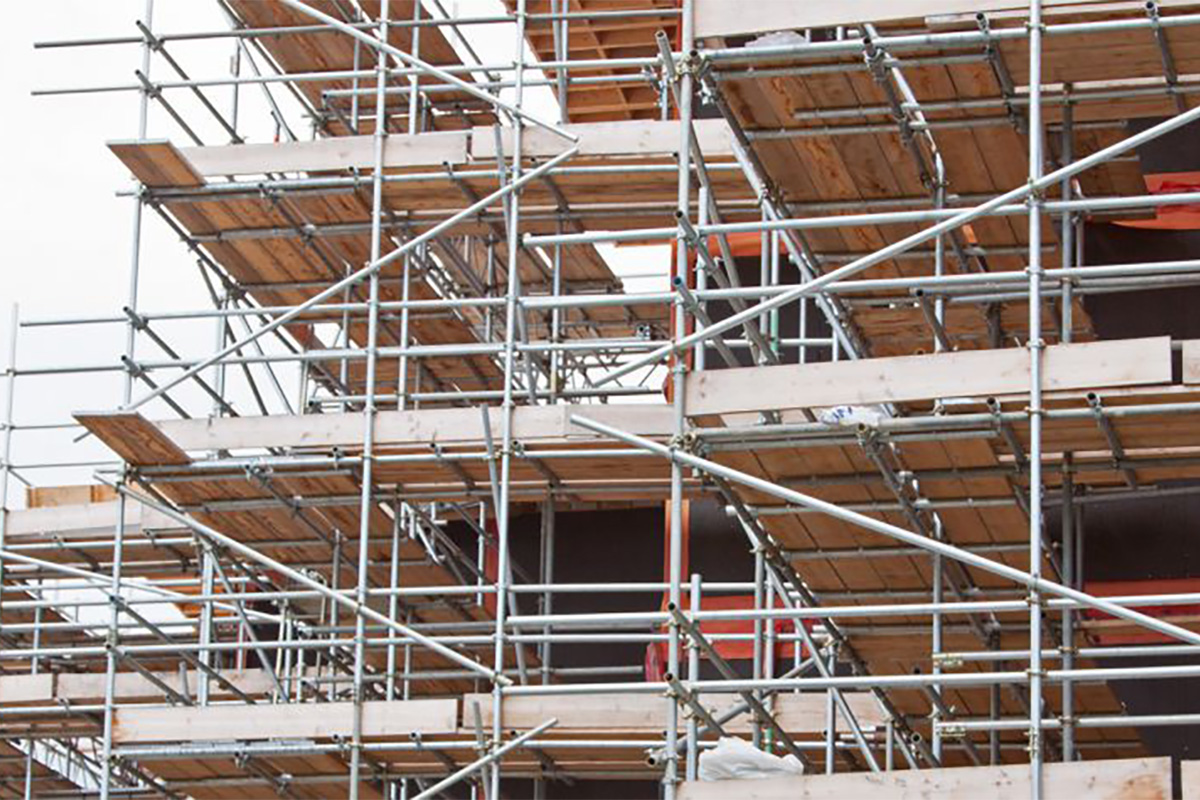Scaffolding Guildford: The Best Option for Your Building and Renovation Projects
Scaffolding Guildford: The Best Option for Your Building and Renovation Projects
Blog Article
Checking Out the Different Sorts Of Scaffolding Used in Building Jobs
The building industry depends greatly on different types of scaffolding to fulfill certain job demands, each offering distinct advantages and applications. Typical structure scaffolding offers a durable structure for basic tasks, while suspended scaffolding is vital for work on skyscraper structures.

Conventional Framework Scaffolding
Conventional frame scaffolding is one of one of the most commonly utilized techniques in the building and construction industry due to its toughness and convenience. This system consists of straight and upright frames that are set up to create a steady system for employees and materials. The major components consist of upright messages, horizontal ledgers, and angled braces, which with each other give a strong structure that can support substantial lots.
Among the vital advantages of conventional framework scaffolding is its adaptability to numerous building and construction projects, varying from residential structures to big commercial frameworks. The modular layout permits very easy assembly and disassembly, making it effective for both long-lasting and short-term jobs. Furthermore, the system can be personalized in elevation and width, fitting various building styles and site problems.
Safety and security is critical in scaffolding applications, and conventional structure systems are furnished with guardrails and toe boards to prevent drops and make certain employee defense. Additionally, regular evaluations and adherence to safety and security policies are critical in maintaining the stability of the scaffold. On the whole, typical structure scaffolding continues to be a basic choice in the construction sector, supplying a reputable platform for labor and improving total project performance

Suspended Scaffolding
Put on hold scaffolding supplies an one-of-a-kind remedy for building jobs that call for accessibility to raised surface areas, specifically in circumstances where traditional framework scaffolding might be unwise. This sort of scaffolding is usually put on hold from the roof covering or upper degrees of a structure, utilizing a system of wheels, ropes, and systems to develop a working area that can be gotten used to numerous elevations.
One of the main advantages of suspended scaffolding is its flexibility. It can be conveniently repositioned or decreased to accommodate adjustments in building demands, making it suitable for jobs such as home window installment, façade job, and maintenance on skyscraper structures. In addition, the marginal impact of suspended scaffolding enables far better use ground space in urban atmospheres, where space is often restricted.
Safety is a critical consideration in the usage of suspended scaffolding. Generally, suspended scaffolding provides a effective and efficient service for accessing hard-to-reach locations in numerous construction circumstances, boosting both productivity and safety on website.
System Scaffolding
System scaffolding, commonly regarded as a modern solution in the scaffolding market, includes pre-engineered elements that can be rapidly put together and adapted for numerous building and construction projects. Scaffolding. This kind of scaffolding is characterized by its modular design, which enables flexibility and effectiveness on task sites, accommodating different heights and architectural requirements
Normally made from high-strength steel or light weight look these up aluminum, system scaffolding supplies enhanced durability and stability. The parts include upright messages, straight ledgers, and angled dental braces, which adjoin firmly, ensuring a durable structure. The style commonly integrates standard installations, streamlining setting up and disassembly processes, thus lowering labor time and costs.

Rolling Scaffolding
Moving scaffolding is a flexible option to standard set scaffolding, created for wheelchair and simplicity of usage on building and construction websites. This kind of scaffolding includes a platform sustained by structures with wheels, enabling workers to conveniently transfer it as required. The wheelchair function dramatically improves performance, as it minimizes downtime the original source connected with dismantling and assembling taken care of scaffolding.
Typically created from lightweight products such as aluminum or steel, rolling scaffolding offers a sturdy yet portable option for jobs needing constant repositioning - Scaffolding. It is particularly advantageous in tasks such as paint, drywall installment, and electric job, where access to various elevations and places is needed
Safety is critical in rolling scaffolding style, with functions such as locking wheels to stop unplanned movement when in operation, and guardrails to safeguard employees from falls. In addition, numerous versions are flexible in height, suiting numerous project needs.
Cantilever Scaffolding

The design of cantilever scaffolding typically involves making use of arms or brackets secured to a building or structure, allowing the system to prolong exterior securely. Security is vital; therefore, these scaffolds need to be crafted to hold up against numerous tons and ecological problems. Normal examination and maintenance are vital to make certain structural scaffolding northern tool stability and worker safety and security.
Cantilever scaffolding is favored for its versatility and effective usage of room, making it a preferred option in urban atmospheres where area restraints are typical. It helps with easier accessibility to high altitudes, inevitably adding to the total effectiveness of building projects. Just like all scaffolding kinds, correct training and adherence to security requirements are crucial for employees using cantilever scaffolding.
Conclusion
In final thought, the diverse types of scaffolding used in building and construction projects each serve unique purposes tailored to particular website demands. Typical framework scaffolding gives security, while suspended scaffolding uses adaptability for elevated jobs. System scaffolding helps with fast assembly, and rolling scaffolding boosts movement for differing workplace. Cantilever scaffolding efficiently addresses challenges in urban setups. Understanding these scaffolding kinds is necessary for enhancing safety and security and efficiency in building, inevitably adding to the successful completion of projects.
Conventional framework scaffolding offers a tough structure for general tasks, while put on hold scaffolding is necessary for work on skyscraper structures.Rolling scaffolding is a versatile alternative to conventional fixed scaffolding, made for mobility and ease of usage on building websites. As with all scaffolding kinds, appropriate training and adherence to safety and security standards are crucial for workers utilizing cantilever scaffolding.
Standard structure scaffolding supplies stability, while put on hold scaffolding supplies convenience for raised tasks. System scaffolding facilitates fast setting up, and rolling scaffolding boosts mobility for differing work settings.
Report this page